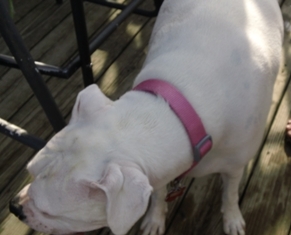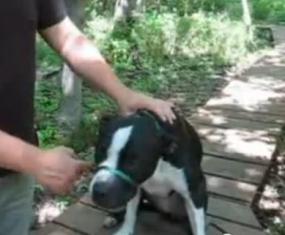Properly identifying our pets is so important that an entire week in April has been designated as National Pet Identification Week. However, proper identification must be secured for your pet year round, and I wanted to share some things you need to know to keep your dog safe while on leash and properly identified if he breaks loose.
The importance of a secure collar
An important tip for dog owners is to first make sure their dog’s collar is snug. Most people put their dog’s collar on too loose for fear of hurting them. However, many dogs back out of their collars every year when nervous or excited. They then run away and get lost, get hit by car, or hurt a child or another pet out of fear and anxiety while on the loose.

A good rule of thumb is put the collar on so that it is snug, but you can fit one finger or a one inch space in between the dog’s neck and collar. Also, once fitted and secure, physically try to see if you can slip the collar off your dog’s head easily. If you can, then the collar is too loose.
Also, Gentle Leaders are used by some pet parents whose dogs pull them too much and are mouthy. Gentle Leaders are great for some dogs and their owners, but not great for others. However, if you decide to use one, please make sure you buy one with a safety line or attachment from the Gentle Leader to the dog’s regular collar. This is important because if the Gentle Leader is improperly placed or the dog uses his paws to slip it off his nose, you need a safety strap to prevent the dog from getting loose and into serious trouble.

Gentle Leader, as presented by Eric Letendre, YouTube/How To Use a Gentle Leader
Here is a video to show you how to use a Gentle Leader
Microchipping in addition to collar tags can be lifesaving
Now that you have learned how to secure the dog’s collar, make sure you add an identification tag. An easily seen name tag notifies others that your pet is domesticated. Therefore, strangers are more likely to assist your pet in finding its home if it gets loose.
But proper tagging is not all. This is also a good time to point out how inexpensive and easy microchips are to safeguard your pet. It’s a fact: one dog or cat is reunited every five seconds in our country because of a simple, one-time insertion of a microchip. All my pets are microchipped!
This is how it works: a veterinarian injects a tiny inert chip the size of a sesame seed just under your pet’s skin, between the shoulder blades. A number on the microchip is entered into an international database, like the Central Animal Registry or PETtrac. If your dog or cat is found, any animal hospital, shelter, or humane society can use a microchip reader to read the unique ID number contained on the chip and find its owner. It’s as simple as that. But remember, you must enroll your pet’s number into the database so that it can be identified later on if lost.
Joe Martins, DVM, Belle Mead Animal Hospital

Joseph Martins, DVM
Belle Mead Animal Hospital


